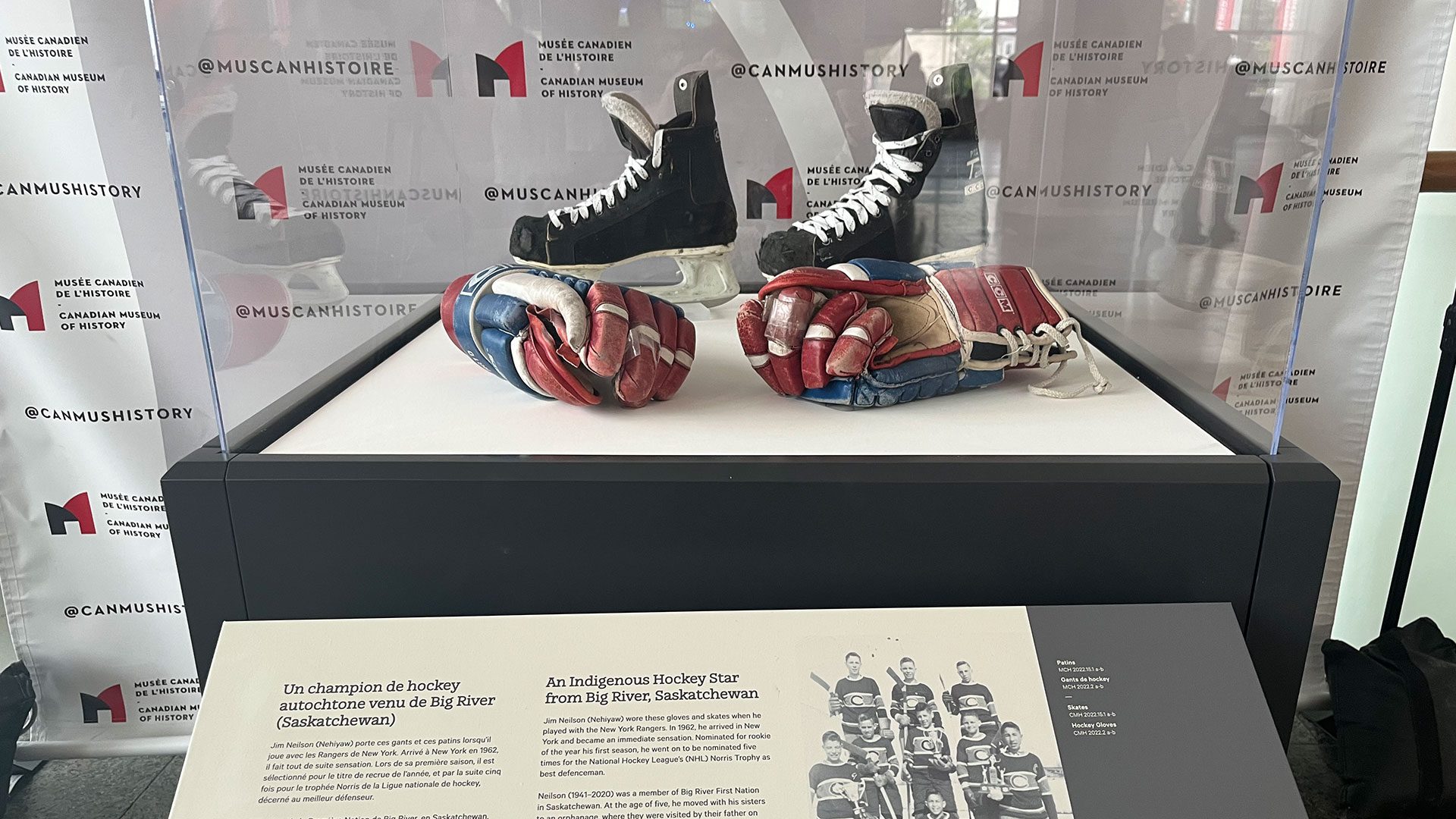A new display in the lobby of the Canadian Museum of History in Gatineau, Que., is honouring the life of a trailblazer.
The skates and hockey gloves were once worn by the late Jim Neilson who played for the New York Rangers. They now sit in an encased exhibit at the entrance to the grand hall.
His family believes Neilson’s story is an inspirational one and that’s why his family donated the items.
“Due to his challenging upbringing growing up in the orphanage and you know that he was able to overcome a lot of obstacles, very young in his life to make it to the NHL and have a really long successful career,” his daughter Darcy Neilson-Wade told APTN News.
Neilson was born in 1941 at Big River, Sask and passed away in November 2020.
He played 12 seasons with the Rangers before moving over to the California Golden Seals and Cleveland Barons where he played for four more years. His professional career ended in 1979 with the Edmonton Oilers which at that time was part of the World Hockey Association or WHA.
When he retired, Neilson had 368 points in 1023 NHL games with 904 penalty minutes.

David Neilson said it was his father’s passion for the sport that pushed him to succeed.
“He had that going in which really helped along the way right, that kind of mindset right, to be successful to get to the NHL,” he said. “I don’t know if dad had it worked out in his head, that that’s how it was all going to work out.
“He had the smarts to have that kind of mindset that suits pro-sports.”
Jenny Ellison, the curator of Sport and Leisure at the museum which sits across from Ottawa, said it’s a journey worth sharing.
“When we think about sports and Indigenous people and even, you know, sports in general, often people think about famous firsts and the first one, but not those who came in between,” she said.
“Jim Nelson is also really unique for having grown up in an orphanage and not a residential school and yet in his story, we can see threads of racism and the challenges he encountered as an indigenous hockey player.”
The collection will be on display until Oct. 1.









